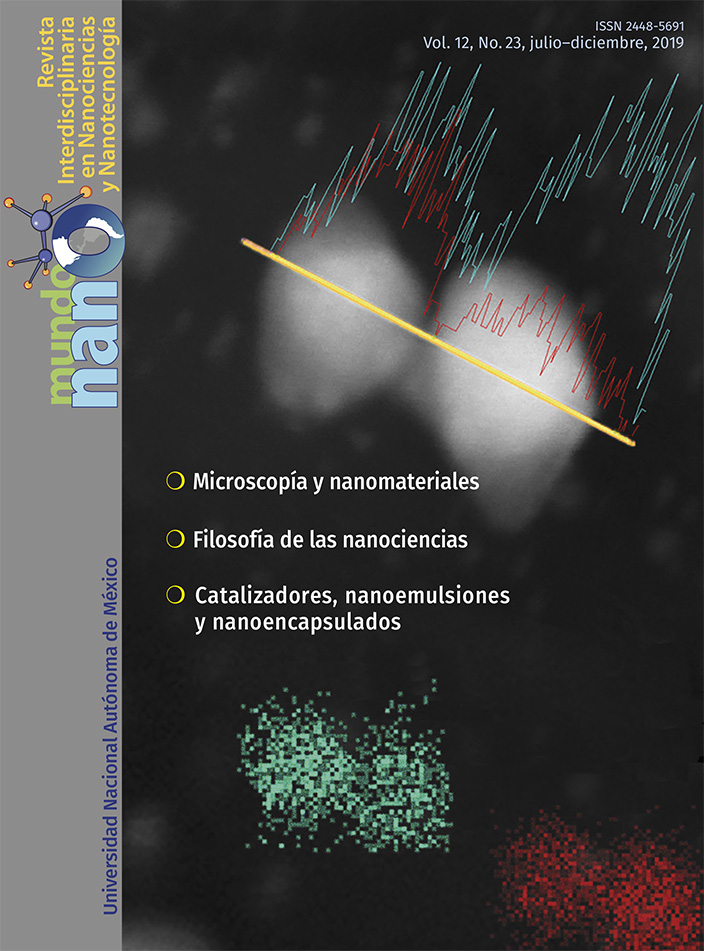De los micrómetros a los picómetros: evolución de las técnicas de microscopía para el estudio de nanomateriales
Contenido principal del artículo
Resumen
Sin lugar a duda, las técnicas de microscopía electrónica (ME) y microscopía de sonda de barrido (SPM) han contribuido enormemente al estudio de nanomateriales, dando información de propiedades morfológicas, estructurales, de superficie, eléctricas y magnéticas, entre muchas otras. Las técnicas más empleadas para estudios a nanoescala han sido las microscopías electrónicas de transmisión y barrido, y por otro lado, las de efecto túnel y de fuerza atómica, respectivamente. Los avances tecnológicos en los últimos años de estas técnicas han permitido límites de resolución que hace 25 años era inimaginables, siendo los últimos valores alcanzados de decenas de picómetros (10-12 m). Cabe señalar, que más allá de esto, las técnicas de microscopia mencionadas han crecido en sus capacidades de análisis en el campo de las nanociencias y nanotecnología, dando lugar a otras técnicas como microscopía electrónica de barrido por transmisión (STEM, del inglés Scanning Transmission Electron Microscopy), Imagen en campo obscuro a ángulo grande en alta resolución (HR-HAADF, del inglés High Resolution - High Angle Annular Dark Field), Crio-Microscopía Electrónica, Tomografía electrónica, Espectroscopía de tunelamiento, Tunelamiento inelástico, Curvas de fuerza, etc. Lo anterior, no solo ha complementado la información morfológica y estructural, sino que también, ha contribuido al entendimiento de fenómenos de interacción y propiedades fisicoquímicas a escalas atómicas y moleculares. En este artículo se hace un análisis de la trascendencia actual que tienen las técnicas de microscopía electrónica, así como las de microscopia de sonda de barrido (SPM), y se menciona brevemente el alcance de estas técnicas como métodos de modificación de superficies a ultra alta resolución, como el caso de la nanolitografía y nanomanipulación, que estan abriendo un panorama enorme en el desarrollo de las tecnologías del futuro.
Descargas
Detalles del artículo

Mundo Nano. Revista Interdisciplinaria en Nanociencias y Nanotecnología, editada por la Universidad Nacional Autónoma de México, se distribuye bajo una Licencia Creative Commons Atribución-NoComercial 4.0 Internacional.
Basada en una obra en http://www.mundonano.unam.mx.





